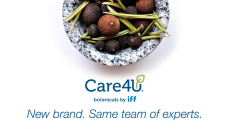South African herbs may offer blood pressure benefits
of novel nutraceuticals, and Tulbaghia violacea (wild
garlic) may find a role in helping to lower blood pressure,
researchers told the 120th annual meeting of the American
Physiological Society
Researcher Irene Mackraj from the University of Kwa-Zulu Natal, Durban told attendees in Washington D.C., that a study of 16 plants native to the Kwa-Zulu Natal region showed that half of these could find a role in reducing elevated blood pressure (hypertension). Indeed, in the UK alone, there are an estimated 10m people with hypertension, defined as having blood pressure higher than 140/90 mmHg. The condition is a major risk factor for cardiovascular disease (CVD), which causes almost 50 per cent of deaths in Europe, and is reported to cost the EU economy an estimated €169bn ($202bn) per year. The new research, presented during the Experimental Biology 2007 conference attended by 12,000 scientific researchers, looked at the possibility of certain herbal preparations to inhibit angiotensin-converting enzyme. ACE inhibitors work by inhibiting the conversion of angiotensin I to the potent vasoconstrictor, angiotensin II, thereby improving blood flow and blood pressure. ACE inhibitors made by drug companies have been found to be beneficial in treating hypertension, particularly in patients with type-1 or type-2 diabetes, and also appear to provide good cardiovascular and renal protection. They do however have side effects. The researchers examined 16 plants to test for potential ACE inhibitor activity. The plants studied were Amaranthus dubius (spleen amaranth), Amaranthus hybridus (slim amaranth), Amaranthus spinosus (spiny amaranth), Asystasia gangetica (Chinese violet), Centella asiatica (Asiatic pennywort), Ceratotheca triloba (poppy sue), Chenopodium album (lamb's quarters), Emex australis (southern three corner jack), Galinsoga parviflora (gallant soldier), Justicia flava (yellow justicia), Momordica balsamina (balsam apple), Oxygonum sinuatum, Physalis viscose (starhair ground cherry), Senna occidentalis (septic weed), Solanum nodiflorum (white nightshade), and Tulbaghia violacea (wild garlic). Methanol or water were used to prepare the extracts, and the plasma ACE activity was determined using rat plasma. The ACEI activity was compared against the conventional ACE inhibitor, captopril. Mackraj told attendees in Washington that eight of the 16 plants demonstrated ACE inhibition activity, with Amaranthus dubius, Amaranthus hybridus, Asystasia gangetica, Galinsoga parviflora, Justicia flava, Oxygonum sinuatum, Physalis viscosa, and Tulbaghia violacea offering blood pressure lowering potential, she said. The top performer, and the only plant extract to inhibit more than 50 per cent the activity of angiotensin-converting enzyme, was found to be Tulbaghia violacea (wild garlic). The researchers concluded that since the number of hypertensive individuals around the world is on the rise, further studies involving this extract could be worthwhile. Source: 120th annual meeting of the American Physiological Society, Experimental Biology 2007 "ACE Inhibitor Activity of Nutritive Plants in Kwa-Zulu Natal" Authors: I. Mackraj, S. Ramesar, H. Baijnath,











